http://secure.pdcnet.org/intstudphil/content/intstudphil_2003_0035_0001_0089_0094?file_type=pdf
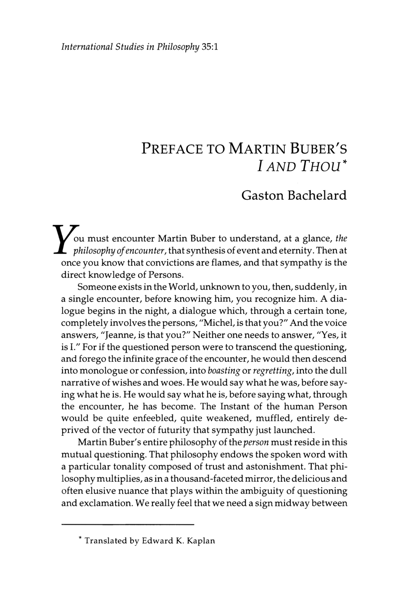
http://en.wikipedia.org/wiki/Klaus_Krippendorff Wikipedia
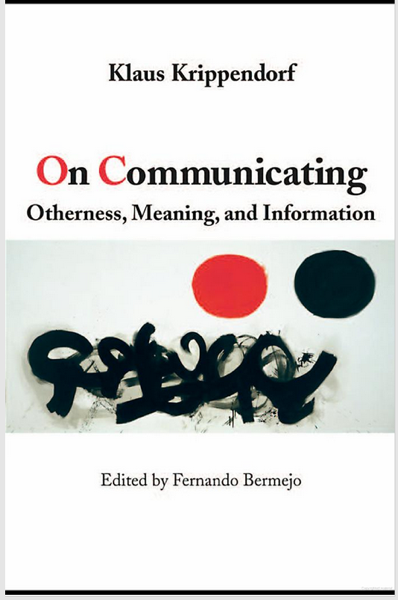
Amazon On Communicating: Otherness, Meaning, and Information [Paperback] Klaus Krippendorff (Author), Fernando Bermejo (Editor)
I’ve got the Kindle sample – looks interesting — the material available on Google books – pdf on the kindle – still can’t find the bit where he talks about the I-thou implications on research.
I did see that somewhere?
Yes, but the pages I saw are not available on the MacBook Pro – the iPad seemed to show them.
I might well buy the book. [ Later – Thursday, 11 October, 2012 – bought the Kindle version.]
A clip from the Google book on the Mac is followed by two I got on the iPad.
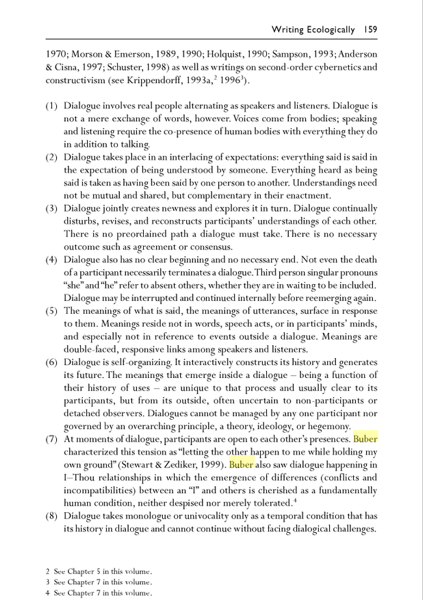
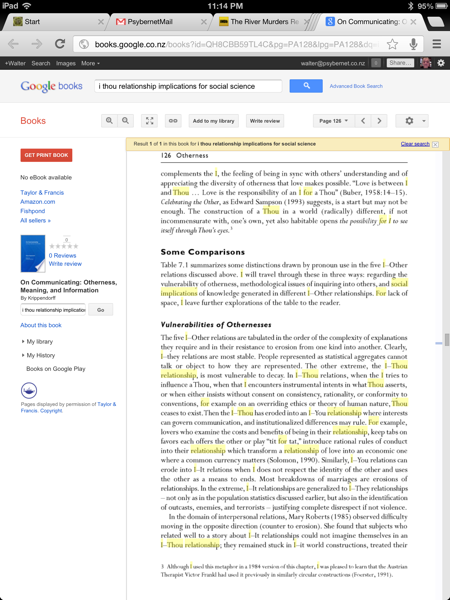
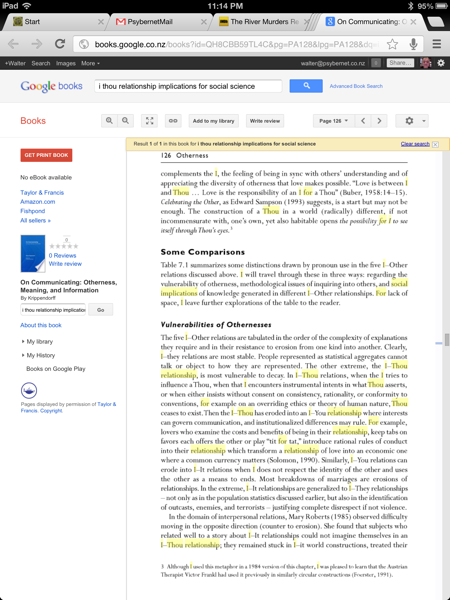
There is a flow in the evolution process.
Grass had to exist before grazing animals could evolve, they in turn had to precede carnivores.
These examples perhaps are best expressed in the principle of the “next adjacent possible”.
A brief digression: I recently ran across a novel way to think about this question. In evolutionary theory, there’s a concept called the “adjacent possible,” coined by scientist Stuart Kauffman.
The “adjacent possible” refers to the change that’s available to you — i.e. adjacent, next door – versus the change that’s not.

From Stuart A. Kauffman — Reinventing The Sacred Amazon
The process is holistically connected to the mutual adaptations in each species. Grasses develop ways to survive grazing. Herbivores evolve capacity to run, and carnivores develop sharper teeth and claws.

This idea is sometimes captured with the phrase co-evolution (Wikipedia):
In biology, coevolution is “the change of a biological object triggered by the change of a related object.”[1] Coevolution can occur at many biological levels: it can be as microscopic as correlated mutations between amino acids in a protein, or as macroscopic as covarying traits between different species in an environment. Each party in a coevolutionary relationship exerts selective pressures on the other, thereby affecting each other’s evolution.
Earlier post exaptation, a related concept.
I’m imagining this whole process as envisage the world of the psyche. The changing nature of how we relate to our being. Everything from collective rituals, art, monks meditating in a cave, group therapy, psychoanalysis, conjoint family week and couple therapy.
The investigations above, summed up as:
Imagine how these apply to the coevolution/invention/creation of the psyche.
(Why I say evolution/invention/creation is evident from this post about psyche this post about the nature of the psyche, about how it is not a thing, yet not nothing either, is relevant.)
Freud was before Jung. The idea of an unconscious and a method of working with it that was possible in the world was available to Freud as a medical clinician.
Moreno was in part a reaction to Freud. Group therapy and conjoint therapy was possible.
Moreno and Buber had found or invented an idea about the nature of the person being in the relationship.
Hendrix is pioneering the ice that being is relationship.
The relational paradigm is the now a niche that has opened, a shift in the culture and new ways of attending the the psyche are possible.
Moreno’s idea that this could well transform science is also on the cards as an I-Thou relationship with things is also possible according to Buber.
I updated an earlier post today with just a few extra words about doubling. They are important to me though.
The question of psych-education and the relationship with the therapist continues to be something I reflect on. After the Dan Wile workshop I went on I see how much could be achieved with virtually no psych-ed, no dialogue, all doubling.
I also updated this post. Also with more on doubling.
I’ll post up more on this.
Stages and Steps in the EFT process
1. Stabilization (Assessment and De-escalation Phase) Step 1: Assessment Step 2: Identify negative cycle and attachment issues Step 3: Access underlying attachment emotions Step 4: Reframe the problem into cycle, attachment need and fears — Partners are no longer victims of the cycle, they are now allies against it.
- During this stage the therapist creates a comfortable and stable environment for the couple to have an open discussion about any hesitations the couples may have about the therapy, including the trustworthiness of the therapist. The therapist also gets a sense of the couples positive and negative interactions from past and present and is able to summarize and present the negative patterns for them.
2. Restructuring the bond (the change phase) Step 5: Access implicit needs, fears, models of self Step 6: Promote acceptance by other-expand the dance Step 7: Structure emotional engagement-express attachment needs and wants
- This stage involves restructuring and widening the emotional experiences of the couple. This is done through couples recognizing their attachment needs, and then changing their interactions based on those needs. At first their new way of interacting may be strange and hard to accept, but as they become more aware and in control of their interactions they are able to stop old patterns of behavior from reemerging.
3. Integration/Consolidation Step 8: New positions in the cycle/enact new stories Step 9: New solutions to pragmatic issues
William Doherty brings a wonderful insight into Couple Therapy. The video shows the nature of the problem he addresses. The article in the Psychotherapy Networker brings forward his way of attending to that problem.
With the thorough and useful Imago dialogue approach there are a few things I find myself bringing from other modalities to the work. Warm up – from psychodrama is one. I work for a while with the couple in the warm up phase so that the dialogue topic is related to what the couple together agree is of value to work on in the relationship. This is a bit different from what can happen where the topic is the frustration one partner has with the other – dialogues about that may get there the long way around, a good warm up, which may include some psych ed, from me can be circumvent the potentially derailing process.
But that is not the main idea of this post.
William Doherty’s idea of the Discernment Phase of therapy creates a much larger space for a warm up with clients who may not be in agreement on what is needed. He gives me as the therapist permission – in a relational way – to see each party on their own if that is needed in a phase that is not yet couple therapy. I love the word discernment here. It is so much more engaging of the client therapist relationship than assessment.
This paragraph sums up the essence.
A central strategy of this work is that although the couple comes in together each time, most of the work goes on in separate conversations with each spouse. In the first 40 minutes of the initial session, I see them together and get both their stories and perspectives on the marriage. After asking what they hope to get from seeing me, I inquire about their divorce narratives (how they got to this point), their repair narratives (how they tried to solve their problems and what outside help they sought), and a question about the best of times in their relationship history. I then spend more than an hour seeing each of them separately. During that time, I focus on each one’s agenda (leaving or saving the marriage, along with other agendas) and try to open up a deeper understanding of each one’s contributions to the marital dynamics and areas of potential change. At the end of each individual conversation, I help the partner prepare a summary to be shared with the other partner at the end of the session.
Here is a pdf of the Psychotherapy Networker article.
william-doherty-discernment.pdf
Thanks Yvonne for pointing this article out to me.
I’m in the middle (still) of reading Kevin Kelly’s Book “What Technology Wants”. Enjoying it and finding it stimulating.
I’m reading the CBZ file in Comic zeal on the iPad. Nice. I’m about 50 pages into the 250.
Finding the free graphic novel, is interesting as it sort of ties in with his other themes. It is si-fi and the links back to the science are fascinating. I learned about Roger Penrose who I’d never heard of. There is a big debate obviously about consciousness, but from the wikipedia article I tend to go with Penrose. Thee is something weird about consciousness. I have an instinctive disdain for the value of neuroscience for psychotherapy – not for neuroscience but for the value people see in it for psychotherapy. However quantum science could change everything once we get the hang of it.
Its well done, a big collaborative production – with an interesting Kick-starter project for volume two.
http://en.wikipedia.org/wiki/Roger_Penrose
Penrose has written books on the connection between fundamental physics and human (or animal) consciousness. In The Emperor’s New Mind (1989), he argues that known laws of physics are inadequate to explain the phenomenon of consciousness. Penrose proposes the characteristics this new physics may have and specifies the requirements for a bridge between classical and quantum mechanics (what he calls correct quantum gravity). Penrose uses a variant of Turing’s halting theorem to demonstrate that a system can be deterministic without being algorithmic. (E.g., imagine a system with only two states, ON and OFF. The system’s state is ON if a given Turing machine halts, and OFF if the Turing machine does not halt, then the system’s state is completely determined by the Turing machine, however there is no algorithmic way to determine whether the Turing machine stops.)

This is a rather interesting but puzzling link to Who Shall Survive. It has a different subtitle. Adds Helen Jennings as an author.
The description there about relationships is one that I have not seen summed up so well before. The idea is central to the work, but not often one that people focus on.
Who shall survive?: A new approach to the problem of human interrelations
Jacob Levy Moreno, Helen Hall Jennings
1 Review
Nervous and mental disease publishing co., 1934 – Psychology – 440 pages
In approaching the contents of this book, the reader must not expect to find society or social groups considered as if they consisted of the sum of the individuals composing them. Wherever two or more people are functioning as a social group that group not only consists of those individuals, but, more important perhaps, if that is possible, than the individuals themselves and without which their functioning as a social group cauld not be expressed, are the relations which maintain between them. It is these intangible, imponderable and invisible aspects of the situation which enable the mathematical sum of a certain number of individuals to function as a social group. Dr. Moreno’s book might he described briefly as a study of these relations between individuals. Dr. Moreno develops a technique for a process of classification which is calculated, among other things, to bring individuals together who are capable of harmonious inter-personal relationships, and so creating a social group which can function at the maximum efficiency and with the minimum of disruptive tendencies and processes. (PsycINFO Database Record (c) 2005 APA, all rights reserved).
As if the modalities in the last post were not enough!
Another form of practice that I keep my eye on is Dynamic Facilitation. This is another mode that is not radically different from Moreno, but takes one aspect forward. How to operationalise small group process to work with whole communities using the principle of isomorphism of systems.
I stumbled on this site today, I recall Rosa Zubizarreta as the author of an excellent manual on Dynamic Facilitation — her site looks good, and maybe I’ll do one of her workshops one day. Or one with Jim Rough.
I recall being advised by my then supervisor, about 30 years ago, to look around for a psychotherapy modality that grabbed me and then to learn it thoroughly and not become prematurely eclectic. I followed that advice. Psychodrama was that modality for me and I am steeped in its traditions and have practiced it for decades and hope to do that for a few more.
However I have more than a passing familiarity with a some other fields of practice, I have a grasp of Archetypal Psychology and I am qualified in Imago Relationship Therapy. I have grappled with my multiple perspectives, and have written a paper about my tension with Imago for the AANZPA Psychodrama Journal: The Imago Affair. I’ve been thinking about this more of late.